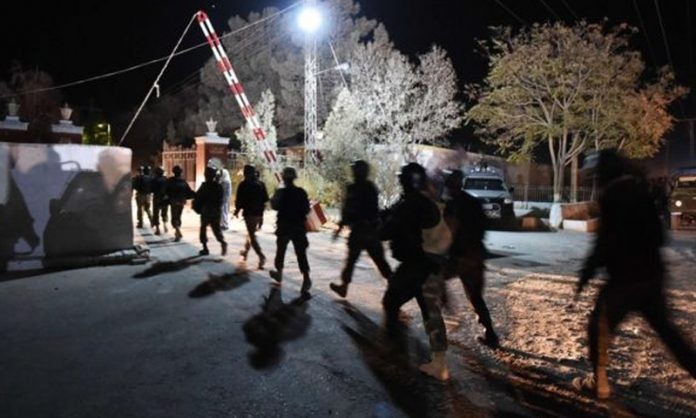
The current wave of Taliban violence in Quetta is no less than a signpost of Taliban’s regrouping

When it comes to bloodletting in Quetta, there have always been two responses to violence. First, the standard response from the government has always been one of externalising the sources of violence. "Handlers of Quetta attack are in Afghanistan", tweeted Sarfraz Bugti, in the wake of recent bloodshed in Quetta. India, officialdom argues, is in cahoots with Afghanistan to sabotage peace in Balochistan, especially its capital city Quetta. This argument is put forward both with regard to Baloch separatism and religious violence in the province.
Contrary to the government response, the response of common public and sub-nationalist political parties has been one of internalising the blame. They believe, especially with regard to religion inspired violence, that the state policy of harbouring non-state actors as policy instruments since the days of East Pakistan crisis has been spurring religious violence.
Where lies the truth?
Post-CPEC agreement, the government has been using the bogey of Indian RAW and its Afghan counterpart NDS’s role in Balochistan which -- as the government believes -- is bent on aborting the CPEC. How much valid is the argument? The problem with this line of argument, if it is taken at its face value, is that it is not supported by history. The religious violence in Balochistan, primarily sectarian in essence, is traced back to October 5, 1999 when for the first time a Hazara was killed in target killing in Quetta city. On the other hand, CPEC is just a three-year old enterprise.
What is new about violence post-CPEC?
Evidence suggests that there is little if anything new about violence perpetrated by religious thugs in Quetta after the CPEC agreement. The only novelty was that in the past Baloch and Pashtuns were not killed en mass. The lists -- of those killed in August 8 suicide attack on lawyers in Civil Hospital Quetta and twin suicide attacks on October 24 in Police training academy -- show that the deceased were almost exclusively either Pashtuns or Baloch.
It is not that the spells of mass killing is a new thing in Quetta. The only difference since August 8 is that in the past it was the Hazara community which was the exclusive victim of mass killing in the city.
Data compiled by South Asia Terrorism Portal (SATP) shows that a total of 41 suicide attacks took place in Balochistan from July 4, 2003 to October 2016. Of these, 30 suicide attacks were executed in Quetta. If we take August 27, 2013 -- when first meeting of Joint Cooperation Committee was held in Islamabad -- as the starting point of CPEC then 13 suicide attacks were recorded in Balochistan. The storm of hype aside, there is no difference when it comes to the scale of violence in Quetta city post-CPEC though Pashtuns and the Baloch have borne the bulk of violence.
What is the character of religious violence?
The character of religion inspired violence in Quetta is twofold. Very fluid, it is sectarian on the one hand and religious on the other. Either way, violence is inspired by Sunni Islam of Deobandi-Wahabi combine. The sectarian violence has traditionally been perpetrated by the Lashkar-e-Jhangvi. The main goals sought by LeJ were borrowed from its parent organisation, the banned Sipah-I-Sahaba Pakistan (SSP). These were the designation of Pakistan as a Sunni state and the declaration of Shias as apostates through constitutional and legal means. What very little LeJ differs from ASWJ, previously SSP, is not in terms of its goals but modus operandi. LeJ aims at eliminating the Shias in target killings, bomb blasts and suicide attacks.
Taliban violence is religious too. The post 9/11 phenomenon, this type of violence is not particular to Quetta. Rather the rest of Pakistan also falls under this category. Here the purpose is one of establishing an Islamic state. Under Pakistani Taliban, initially FATA and then parts of Khyber Pakhtunkhwa experienced the brutal spells of Taliban rule.
No one was spared from violence no matter which sect or school of thought one came from. Worship places, innocent citizens and religious scholars, political leaders and state apparatus, everything and everyone who opposed militants came under attack.
The latest storming of police academy in Quetta and the mowing down of more than 60 police cadets seems to be the handiwork of this category of Taliban. Post Zarb-e-Azb, Taliban lost huge chunks of territories under their control in FATA and parts of Khyber Pakhtunkhwa. A possible resurrection, the current wave of Taliban violence in Quetta is no less than a signpost of Taliban’s regrouping, this time in Balochistan.
In a nutshell, no one is safe no matter what religion, sect, ethnicity or school of thought one subscribes to. We are at war with a militant ideology rooted in a distorted version of Deobandi Islam informed by Wahabi underpinnings. What this leads us is to rethink and revisit our current position regarding Taliban violence.
Indian or Afghan involvement in Balochistan, not a distant possibility though, is not the cause of religious violence. It just serves as a risk factor: their alleged involvement intensifies the process of religious violence but does not engender it. The source of religious-cum-sectarian violence is internal: the age old patronage to non-state actors.
What are corrective measures?
Rebuilding citizen’s trust requires the government to break once for all its alleged policy of good and bad Taliban distinction and treat every category of Taliban as the state’s enemy. Second, the government in collaboration with civil society should start an inter-sect dialogue between the religious scholars of Shia and Sunni school of thoughts. Third, intensifying intelligence based operations (IBOs), rather than increasing the number of checkposts and ban on pillion riding -- only to increase public woes -- works as deterrent to militants.